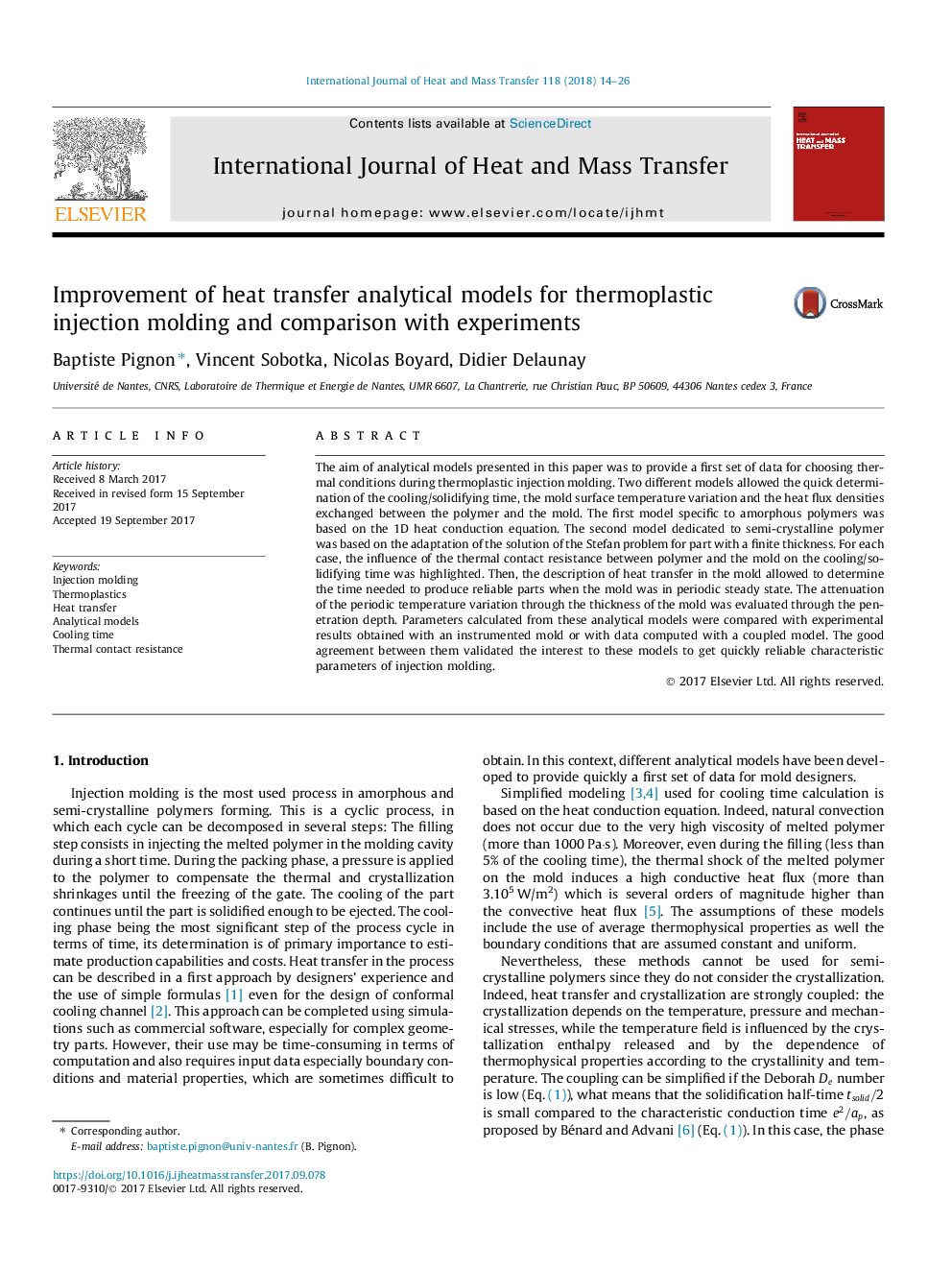| Article ID | Journal | Published Year | Pages | File Type |
|---|---|---|---|---|
| 7054634 | International Journal of Heat and Mass Transfer | 2018 | 13 Pages |
Abstract
The aim of analytical models presented in this paper was to provide a first set of data for choosing thermal conditions during thermoplastic injection molding. Two different models allowed the quick determination of the cooling/solidifying time, the mold surface temperature variation and the heat flux densities exchanged between the polymer and the mold. The first model specific to amorphous polymers was based on the 1D heat conduction equation. The second model dedicated to semi-crystalline polymer was based on the adaptation of the solution of the Stefan problem for part with a finite thickness. For each case, the influence of the thermal contact resistance between polymer and the mold on the cooling/solidifying time was highlighted. Then, the description of heat transfer in the mold allowed to determine the time needed to produce reliable parts when the mold was in periodic steady state. The attenuation of the periodic temperature variation through the thickness of the mold was evaluated through the penetration depth. Parameters calculated from these analytical models were compared with experimental results obtained with an instrumented mold or with data computed with a coupled model. The good agreement between them validated the interest to these models to get quickly reliable characteristic parameters of injection molding.
Keywords
Related Topics
Physical Sciences and Engineering
Chemical Engineering
Fluid Flow and Transfer Processes
Authors
Baptiste Pignon, Vincent Sobotka, Nicolas Boyard, Didier Delaunay,
